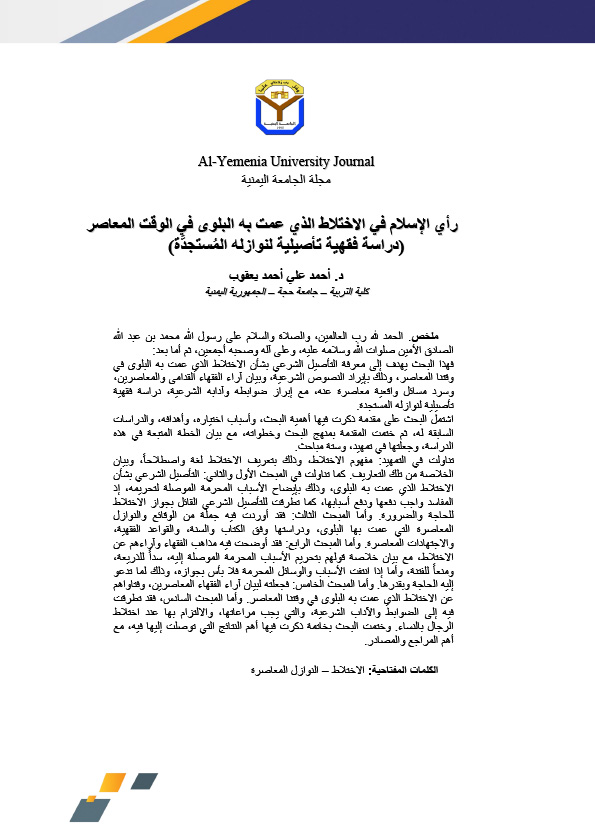Islam’s opinion on the mixing that has become widespread in the contemporary era (a fundamental jurisprudential study of its new catastrophes)
Keywords:
Socialize, Contemporary calamitiesAbstract
Praise be to God, Lord of the Worlds, and may blessings and peace be upon the Messenger of God, Muhammad bin Abdullah, the truthful and trustworthy, may God’s prayers and peace be upon him, and upon all his family and companions, and then as for what follows:
This research aims to find out the legal basis for mixing that has become widespread in our contemporary time, by citing legal texts, stating the opinions of ancient and contemporary jurists, and listing contemporary realistic issues about it, while highlighting its legal controls and etiquette, as a fundamental jurisprudential study of its new calamities.
The research included an introduction in which I mentioned the importance of the research, the reasons for choosing it, its objectives, and previous studies. The introduction was then concluded with the research methodology and steps, with an explanation of the plan followed in this study, and I made it into an introduction and six sections.
In the introduction, I dealt with the concept of mixing, by defining mixing linguistically and terminologically, and explaining the conclusion from those definitions. In the first and second sections, I also dealt with the legal basis regarding mixing that has become widespread, by clarifying the forbidden reasons that lead to its prohibition, as evils must be repelled and their causes must be repulsed. I also addressed the legal basis that says it is permissible to mix due to need and necessity. As for the third section: I presented a number of contemporary facts and calamities that caused the calamity, and studied them according to the Qur’an and Sunnah, jurisprudential rules, and contemporary jurisprudence. As for the fourth section: I have explained in it the doctrines of the jurists and their opinions about mixing, with a statement of the summary of their statement prohibiting the forbidden reasons that lead to it, in order to block the pretext and prevent temptation, but if the forbidden reasons and means do not exist, then there is no problem with its permissibility, and that is when the need calls for it and to the extent of it. As for the fifth section: I made it to explain the opinions of contemporary jurists, and their fatwas about the mixing that has become widespread in our contemporary time. As for the sixth section, I touched on the legal controls and etiquette, which must be observed and adhered to when men and women mix. I concluded the research with a conclusion in which I mentioned the most important results I reached, along with the most important references and sources.



